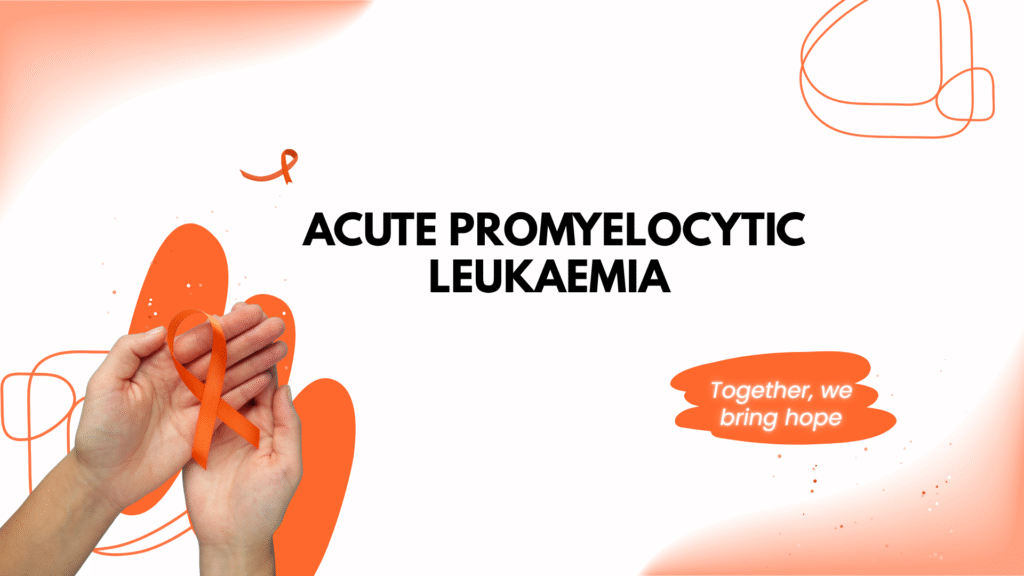APL is a subtype of AML in which immature white blood cells, called promyelocytes, build up in the bone marrow and blood. These abnormal cells prevent the production of healthy blood cells, leading to problems such as anaemia, infections, and bleeding. Acute Promyelocytic Leukaemia (APL) stands as a testament to the power of precision medicine. Once a medical emergency with a dire prognosis, it is now one of the most curable forms of adult leukaemia. This transformation, driven by genomics and targeted therapy, offers a critical model for the future of cancer care, particularly in the Indian context.
Signs and Symptoms
Patients with APL often present with symptoms related to low blood counts and a high risk of bleeding, which can be life-threatening if untreated. Common features include:
- Easy bruising or prolonged bleeding
- Nosebleeds or gum bleeding
- Small red spots on the skin (petechiae)
- Fatigue, weakness, or paleness
- Fever and infections
Because of the high risk of severe bleeding, APL is considered a medical emergency and requires urgent treatment.
Diagnosis
Doctors use several tests to confirm APL:
- Blood tests: To check blood cell counts and abnormal promyelocytes.
- Bone marrow examination: To identify the abnormal promyelocytes.
- Cytogenetic and molecular tests: To detect the t(15;17) translocation and the PML-RARA fusion gene.
Early diagnosis is crucial to prevent bleeding complications.
The Genomic Clarity of APL
The success of APL treatment stems from a fundamental discovery: its genetic consistency. In over 98% of cases, a single genetic alteration defines the disease—a translocation between chromosomes 15 and 18, creating the PML-RARα fusion gene. This gene acts as a master switch, blocking the maturation of white blood cells. This clear, singular target made the development of targeted therapies possible.
A Revolution in Targeted Treatment
Instead of broad-acting chemotherapy, APL is treated with agents designed to correct this specific genetic error.
- ATRA (All-Trans Retinoic Acid) forces the cancerous cells to mature and die naturally, effectively reversing the block caused by the PML-RARα gene.
- Arsenic Trioxide (ATO) completes the process, precisely eliminating the remaining leukemic cells.
- The combination of ATRA and ATO has achieved cure rates exceeding 90%, with a significantly improved side-effect profile compared to traditional chemotherapy.
The Indian Landscape: Data and Delivery
GLOBOCAN data underscores the burden of leukaemia in India. For APL, this highlights a dual reality:
- The Challenge: Rapid diagnosis remains critical. Symptoms must be recognized early to initiate treatment without delay.
- The Opportunity: The ATRA/ATO protocol is a triumph of accessibility. The widespread availability of high-quality, affordable generic versions in India ensures this life-saving treatment can reach a broad population.
At Healius, we have integrated this protocol as a standard of care, demonstrating that global treatment benchmarks can be successfully met within the Indian healthcare system.
A Considered Conclusion
The story of APL is more than a single success; it is a paradigm. It proves that understanding cancer at a genomic level lead to profoundly effective, targeted treatments. It offers a clear vision for the future of oncology and, more importantly, provides immediate and tangible hope for our patients today.
A Message of Hope
From your care team at Healius,
A diagnosis of Acute Promyelocytic Leukaemia (APL) is serious, but it comes with a very important reason for hope: APL is now highly curable. We understand this because we know its exact genetic cause. This knowledge allows us to use targeted “smart” medicines (ATRA and Arsenic) that fix the specific problem in the blood cells. This treatment is highly effective and gentler than old-fashioned chemotherapy. In India, these medicines are accessible and affordable.
Our focus at Healius is on a swift, accurate diagnosis and starting this proven treatment immediately. Our goal is your cure, and with APL, that goal is firmly within reach.


